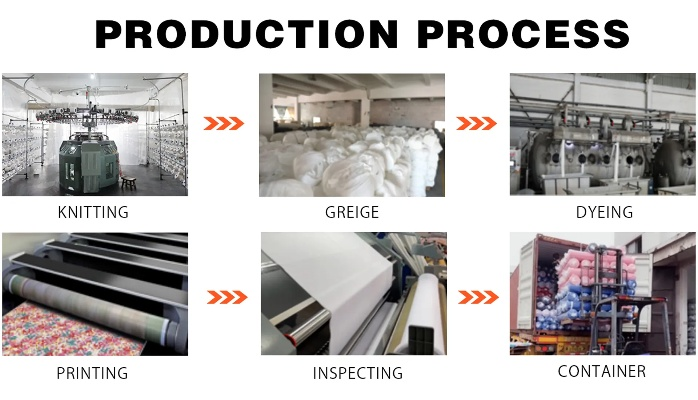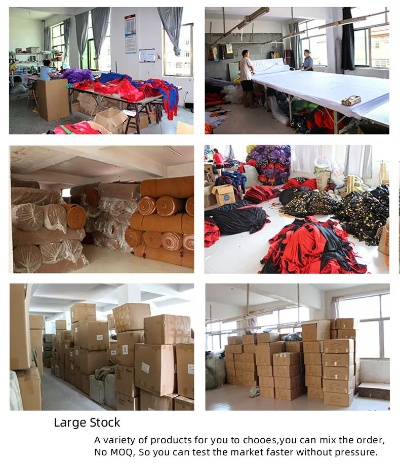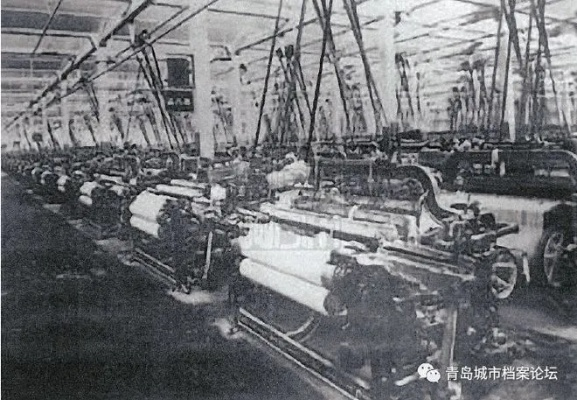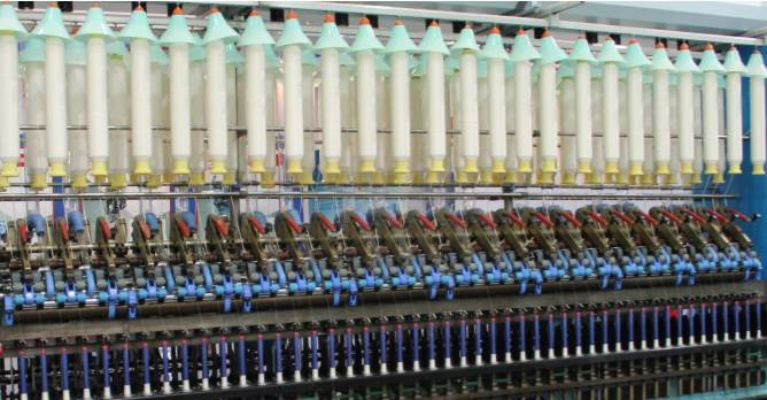The Rise and Fall of Shaoxing Dehong Textile Factory:A Case Study
: The Rise and Fall of Shaoxing Dehong Textile Factory: A Case Study,Abstract: This paper delves into the dramatic history of the Shaoxing Dehong Textile Factory, a prominent textile enterprise in China's Zhejiang Province. From its early successes to its eventual decline, the story illustrates the complex interplay between technological innovation, market forces, and government policies that shape the evolution of an industrial sector. By examining the factory's growth trajectory, we gain insight into the challenges faced by small-scale enterprises in adapting to rapidly changing economic landscapes and the importance of sustainable practices in maintaining competitiveness in today's global economy.
Introduction: In the tapestry of China's textile industry, the story of Shaoxing Dehong Textile Factory is a testament to the resilience of manufacturing in the face of global competition. This factory, once a symbol of excellence in the local market, has faced challenges that have led to its closure. In this article, we will explore the history of Dehong Textile Factory, its successes and failures, and the lessons learned from its journey.
Historical Background: Dehong Textile Factory was established in 1990 by Mr. Zhang Dehong, who had a keen eye for quality and a commitment to innovation. The factory quickly gained a reputation for producing high-quality fabrics that met international standards. Over the years, Dehong Textile Factory expanded its production capacity, hiring more workers and investing in new machinery. By 2005, the factory had become one of the largest producers of cotton and silk fabrics in Shaoxing, with annual revenues reaching several hundred million yuan.

Successes and Failures: One of Dehong Textile Factory's greatest achievements was its ability to adapt to changing market demands. In the early 2000s, as consumer tastes shifted towards eco-friendly and sustainable materials, Dehong Textile Factory began investing in organic cotton production. This move proved successful, as demand for organic products increased significantly. Additionally, Dehong Textile Factory became a leader in developing new technologies, such as automated dyeing machines and computer-controlled cutting tables, which helped to improve efficiency and reduce waste.
However, despite these successes, Dehong Textile Factory faced numerous challenges. One major issue was the increasing pressure on Chinese factories to produce cheap goods for the domestic market. As a result, many companies were forced to cut corners in order to stay competitive, leading to lower quality products and unethical labor practices. Dehong Textile Factory also struggled with supply chain disruptions caused by natural disasters and political instability in neighboring countries.
Case Study: One example of Dehong Textile Factory's struggles can be seen in its relationship with a major overseas customer. In 2010, the company experienced a sudden downturn in demand due to economic uncertainty in the United States. Many of Dehong Textile Factory's best-selling products were being replaced by cheaper imports from other Asian countries. To combat this decline, Dehong Textile Factory implemented a series of cost-cutting measures, including layoffs and reduced production schedules. However, these measures only served to further damage the company's reputation and weaken its market position.
Conclusion: The story of Shaoxing Dehong Textile Factory is a reminder of the importance of staying true to your values and principles in the face of adversity. Despite its impressive achievements, Dehong Textile Factory ultimately failed to adapt to changing market conditions and maintain its position as a leader in the industry. While it may not have been able to avoid closure, its legacy serves as a cautionary tale for other textile manufacturers looking to succeed in today's global marketplace.
背景介绍
绍兴德鸿纺织品厂是一家位于中国浙江省绍兴市的知名纺织企业,以其精湛的工艺、优质的产品和良好的信誉在业界享有盛誉,该厂专注于纺织品的设计、生产和销售,产品涵盖各类纺织品,包括但不限于丝绸、棉布、麻布等。
企业概况

企业规模与设施
绍兴德鸿纺织品厂拥有现代化的生产设施和先进的生产技术,拥有先进的生产设备、检测设备和研发中心,工厂占地面积广阔,拥有多个生产车间和研发实验室,能够满足不同规格和品种的纺织品生产需求。
产品种类与特点
该厂的产品种类繁多,包括丝绸、棉布、麻布等各类纺织品,其产品质地优良,手感舒适,色彩丰富,图案精美,该厂注重环保和可持续发展,采用环保材料和工艺,致力于打造绿色、环保、健康的纺织品。
企业运营案例分析
成功案例一:高品质丝绸生产
在丝绸生产方面,绍兴德鸿纺织品厂采用了先进的生产工艺和技术,严格控制产品质量,该厂拥有一支专业的丝绸研发团队,不断推出新品,满足市场需求,该厂注重环保和可持续发展,采用环保材料和工艺,打造绿色丝绸产品,在市场上,该厂的丝绸产品深受消费者喜爱,销售额持续攀升。
成功案例二:多元化产品组合

该厂的产品组合非常多元化,涵盖了各种不同的纺织品类型,该厂注重市场调研和客户需求分析,根据市场需求推出多样化的产品,该厂还注重品牌建设和营销推广,通过各种渠道宣传品牌和产品,提高品牌知名度和美誉度,该厂还积极参与行业交流和合作,与同行企业建立良好的合作关系,共同推动行业的发展。
企业特色与优势
企业特色:注重技术创新和环保发展
绍兴德鸿纺织品厂注重技术创新和环保发展,采用先进的生产工艺和技术,严格控制产品质量,该厂还注重品牌建设和营销推广,提高品牌知名度和美誉度,该厂还积极参与行业交流和合作,与同行企业建立良好的合作关系,这些特色和优势使得该厂在业界具有很高的知名度和竞争力。
企业优势:优质原材料采购和严格质量控制
该厂拥有优质的原材料采购渠道和严格的质量控制体系,该厂从源头抓起,严格控制原材料的质量和来源,确保产品质量和安全,该厂还注重生产过程的控制和管理,采用先进的生产设备和检测设备,提高生产效率和产品质量,这些优势使得该厂的产品在市场上具有很高的竞争力。
展望未来,绍兴德鸿纺织品厂将继续秉承“质量第一、客户至上”的经营理念,加强技术创新和环保发展,提高生产效率和产品质量,该厂还将积极拓展市场,加强品牌建设和营销推广,提高品牌知名度和美誉度,该厂还将加强与其他企业的合作和交流,共同推动行业的发展。
Articles related to the knowledge points of this article:
高阳方杰纺织品公司招聘启事 Your Next Career Step
The Story of Double Connect Textiles:A Multinational Textile Company
A Detailed Guide to Shopping at Yuers Textile Live Room
Textiles and Methyl Ethane Determination Methodology
Revolutionizing Textiles:The Future of Material Innovation
The Magic of Small Stone Textiles in Fashion Advertising Video



